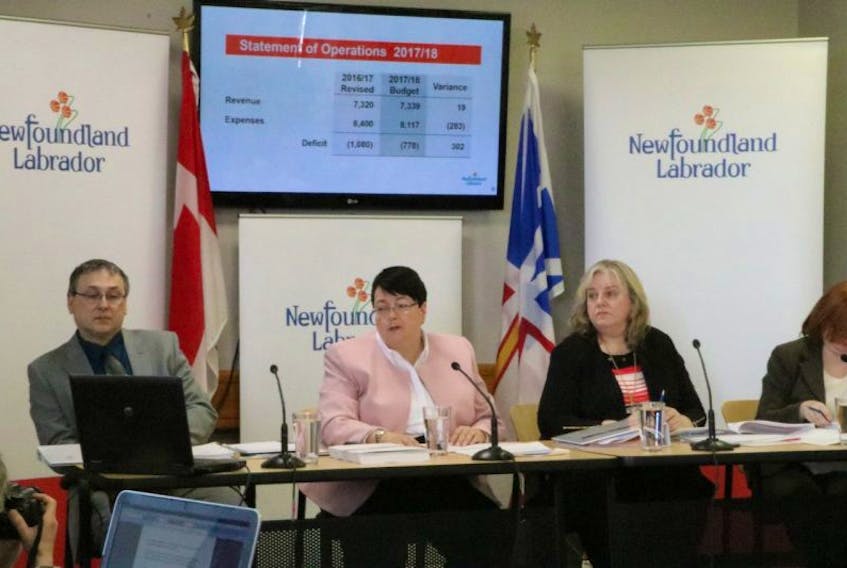Finance Minister Cathy Bennett will beat her deficit reduction target, posting a $778 million shortfall this year, but the budget documents offered zero meaningful detail about where the $283 million in spending cuts will happen.
The gas tax will be cut by 8.5 cents on June 1, and a further four cents on Dec. 1, but the briefing materials provided to journalists wouldn’t say how much revenue the government will forego by implementing the tax cut.
Only in responding to questioning from journalists did Bennett acknowledge that it will mean a loss of $60 million in revenue this year, and another $85 million in future years.
After castigating the previous government for being “addicted to oil” it appears that a lot of the improved fiscal situation comes from oil revenue.
The oil forecast of $56/barrel for the coming year, and the assumption of a 75 cent exchange rate are both more generous than last year’s budget.
The government will be enacting legislation to freeze all management and non-union salaries, but there’s no mention of layoffs in the budget documents.
Finance Minister Cathy Bennett was at pains to say that no mass layoffs were announced today, and no mass layoffs were part of the plan.
But that doesn’t mean every public servant’s job is safe; Bennett said that the government will be constantly looking for “efficiencies” and who knows? That might mean cutting jobs later.
Looking to the long-term forecast, the government is leaning extremely heavily on oil revenue increasing in order to balance the budget by 2022.
Bennett said that essentially, the budget will balance itself because of oil royalty revenues, as long as the government can keep spending flat for the next six years.
But more cuts are definitely coming.
The media briefing materials talk vaguely about “reviewing expenditures of agencies, boards and commissions for anticipated savings of $42 million.”
There’s also a reference of “removing duplication and streamlining management structures” for a savings of $31 million without much in the way of specifics.
The most marked difference from last year’s budget was in the presentation.
Last year, in the Liberals’ first budget, the cuts were clearly laid out, and the overall picture lacked any sort of clear narrative or sense of politicians “selling” the budget.
This year it’s the reverse, with the cuts entirely obfuscated, and government officials initially declined to make Department of Finance officials available to answer technical questions about the budget.
Politicians were available to highlight all the spending government is doing, even re-announcing money that is typically spent every year, or stuff that was already revealed in pre-budget announcements.
The clear narrative from Bennett was that the Liberal medicine is working; the state of the province’s finances is still dismal, but last year’s forecast $1.8 billion deficit ended up only being $1.1 billion, and the plan to return to surplus is on track.
But the work isn’t done. When Health Minister John Haggie spoke to journalists, he wouldn’t talk specifics but he said that the government intends to improve health outcomes without spending more money.
Given that the government is forecasting an 11 per cent increase in inflation over the next four years, that means the health care system will need to do more with less.









